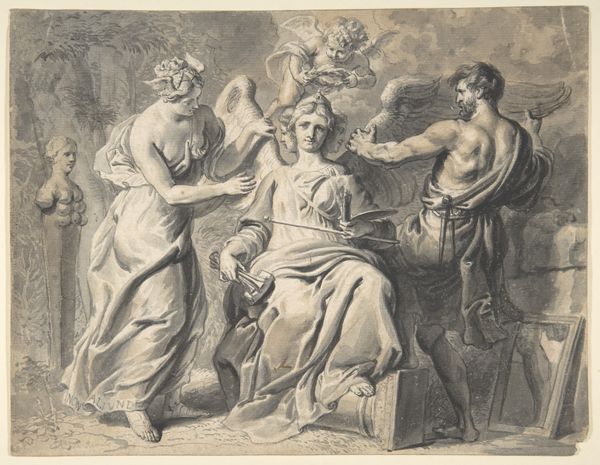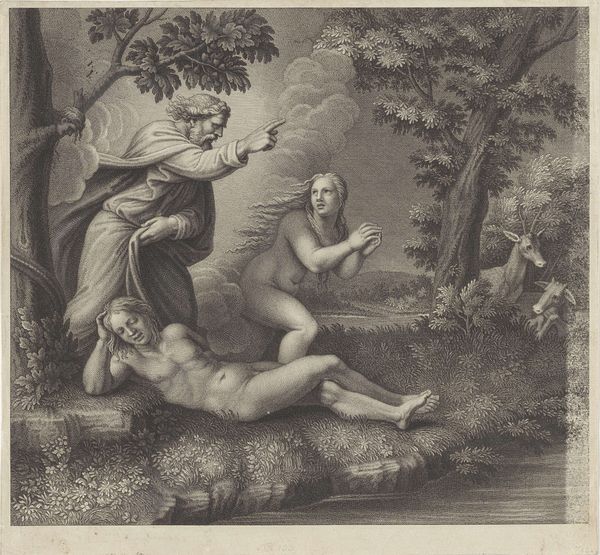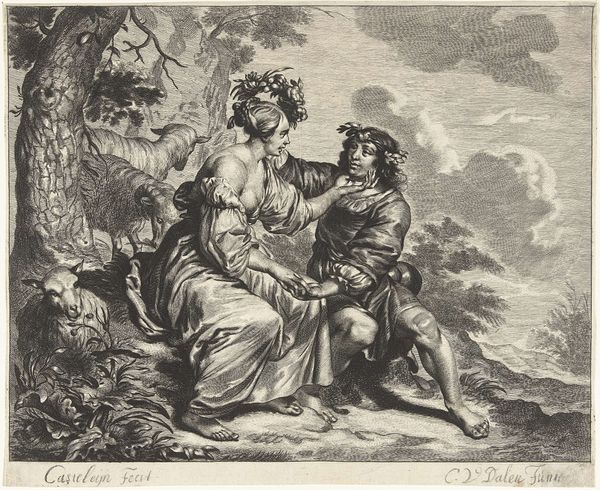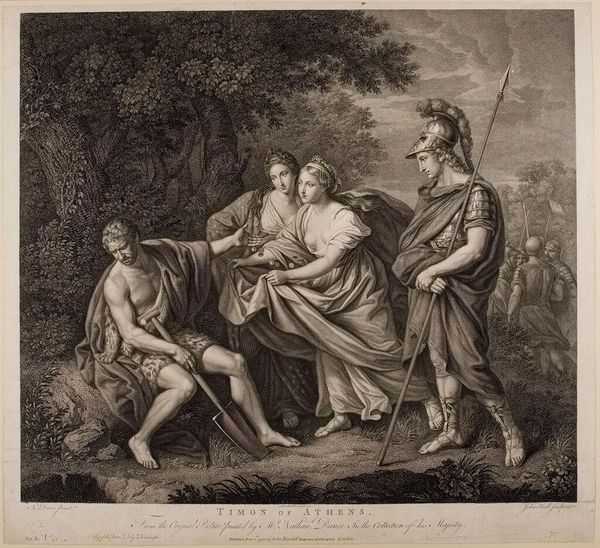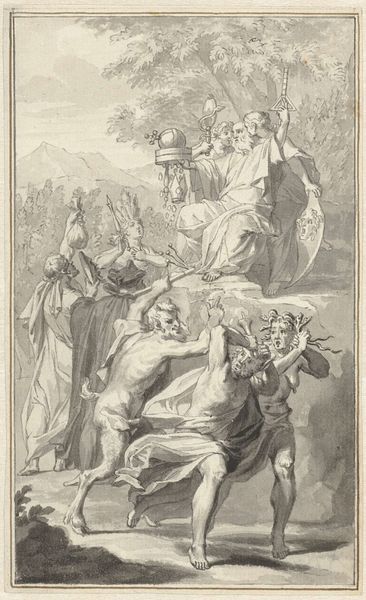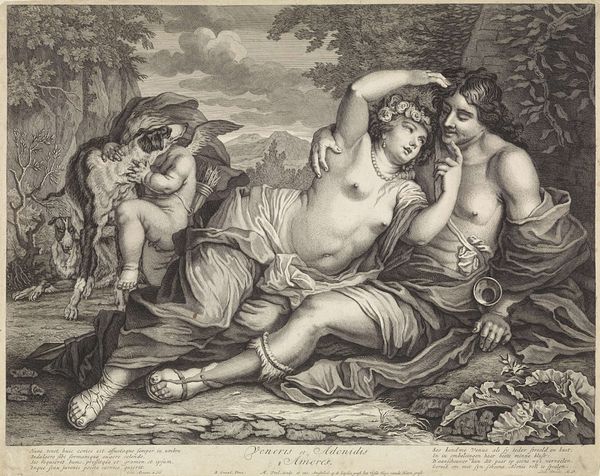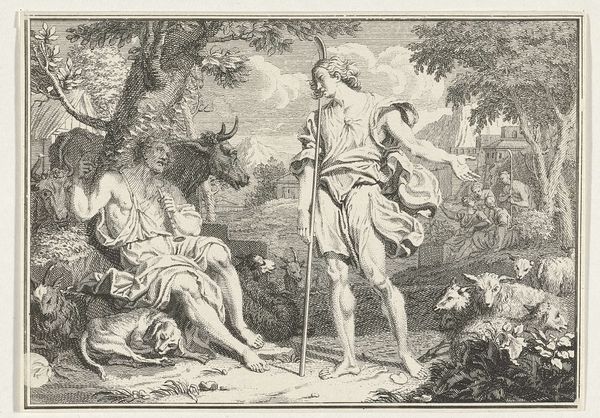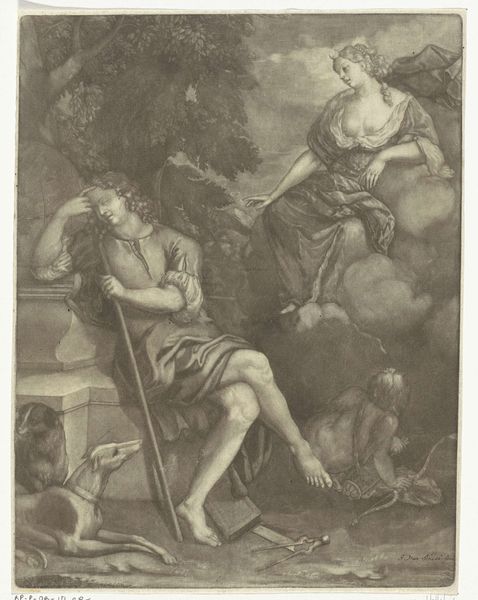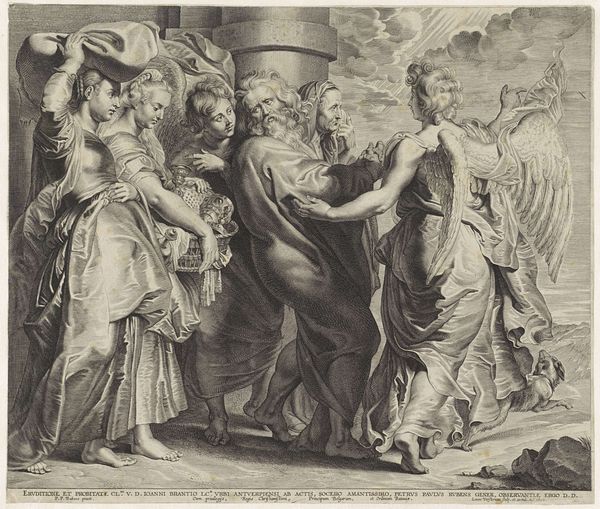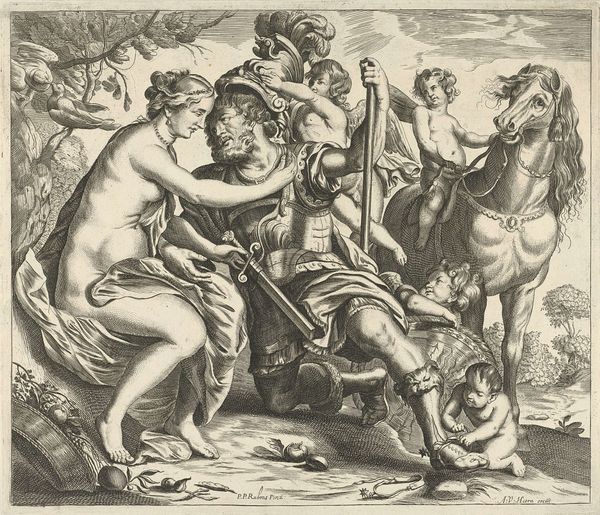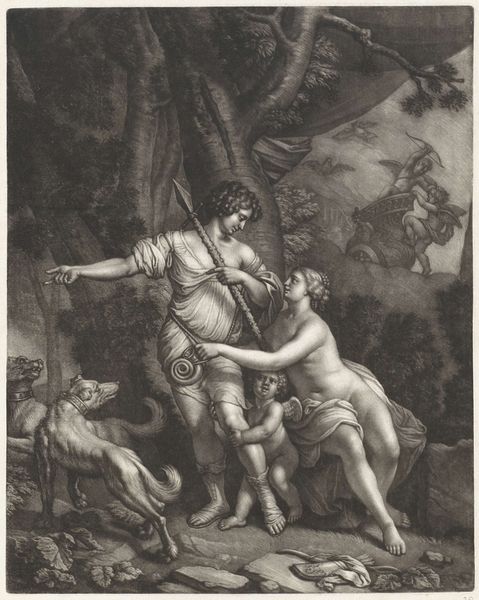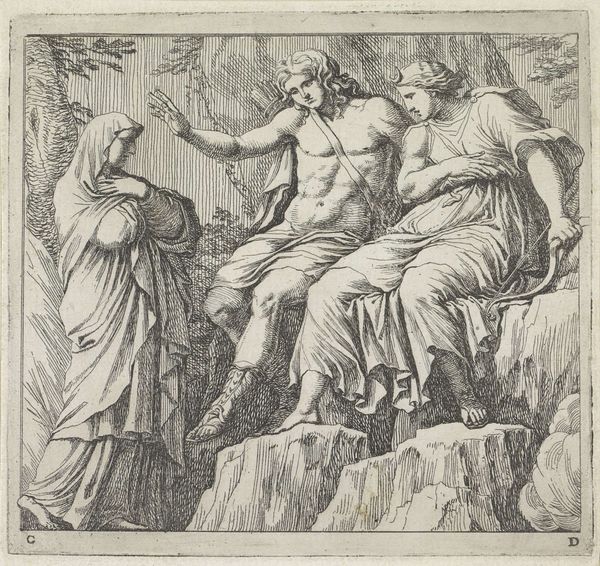
Christus verschijnt als tuinman aan Maria Magdalena (Noli me tangere) 1666 - 1680
0:00
0:00
engraving
#
baroque
#
landscape
#
figuration
#
line
#
history-painting
#
engraving
Dimensions: height 472 mm, width 623 mm
Copyright: Rijks Museum: Open Domain
Curator: Up next we have "Christus verschijnt als tuinman aan Maria Magdalena (Noli me tangere)," created sometime between 1666 and 1680 by Jan Edelinck. It's an engraving depicting Christ's appearance to Mary Magdalene after his resurrection. Editor: My immediate impression is one of ethereal grace. The delicate lines of the engraving create a luminous quality, almost as if light is emanating from within the figures themselves. The landscape recedes softly. Curator: Absolutely, Edelinck masterfully uses line to create depth and texture. Beyond the composition itself, it is useful to recall the historical context: engravings like this played a crucial role in disseminating religious imagery, reinforcing the values and narratives upheld by the Church and aristocracy of the time. Editor: But there's a tension here. The lines define the dramatic poses—Christ, his robes flowing, angels overhead—yet also provide very tactile detail, especially on Christ. There's a very immediate, almost sensual quality about it. Curator: Well, religious art throughout history often straddled the line between the spiritual and the physical. While it clearly aims to elevate the viewer, it simultaneously had to appeal to a wide audience, who each found a way of engaging with the stories. The narrative here, "Noli me tangere"—"touch me not"—highlights Christ’s liminal state post-resurrection. His refusal speaks to the new reality established by the Gospels. Editor: The treatment of space adds to the meaning too, I think. Mary's kneeling, grounded form juxtaposed with Christ floating on a cloud really makes one ask what it means to belong on Earth, as a human, or in heaven, with God. Curator: I agree. In looking at how devotional prints circulated at this time, one wonders what kind of domestic and community spaces hosted them, and the different possible conversations or arguments they sparked about faith. Editor: Reflecting on its visual organization now, the power lies in how contrasts play together, both spatially, through light and shade, and between Mary's human plea versus the angels’ song above, an interplay which speaks to faith in both palpable and unearthly realms. Curator: For me, thinking about what this Baroque engraving achieved when circulating as one image amongst others sheds light on the period's complex negotiations of religion and political power, the kind of dynamic imagery through which society formed its image of itself.
Comments
No comments
Be the first to comment and join the conversation on the ultimate creative platform.
